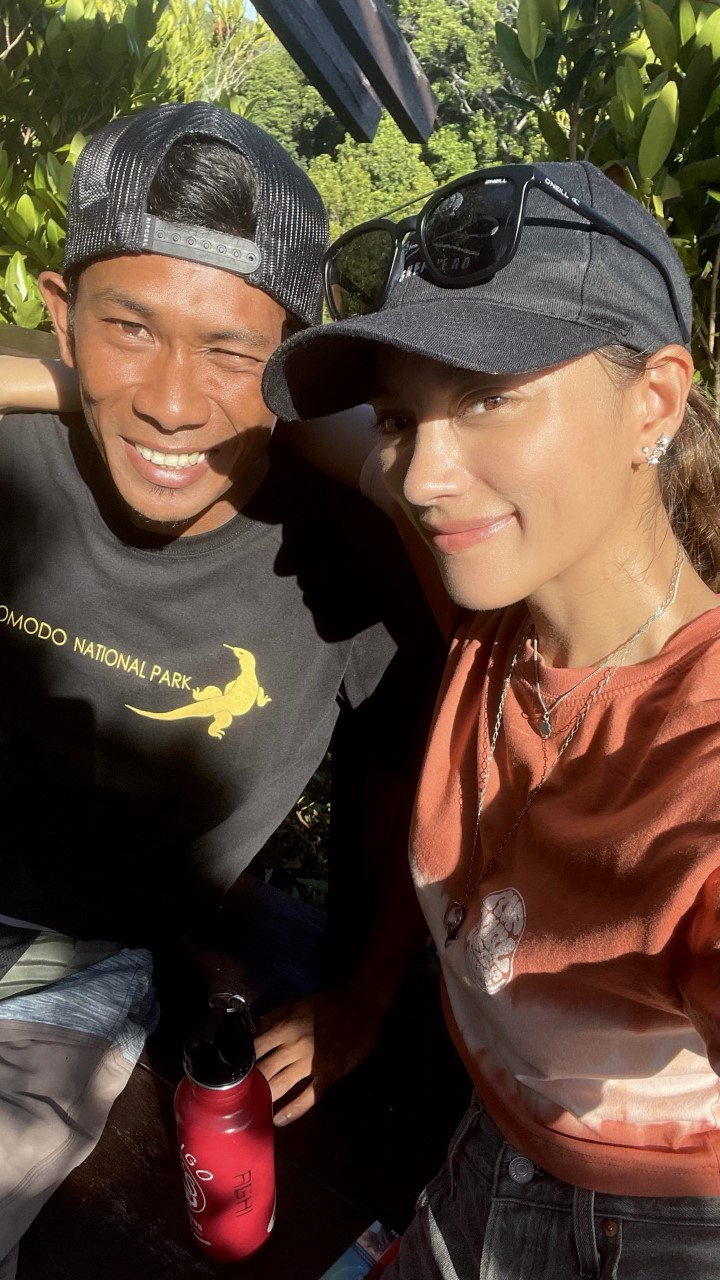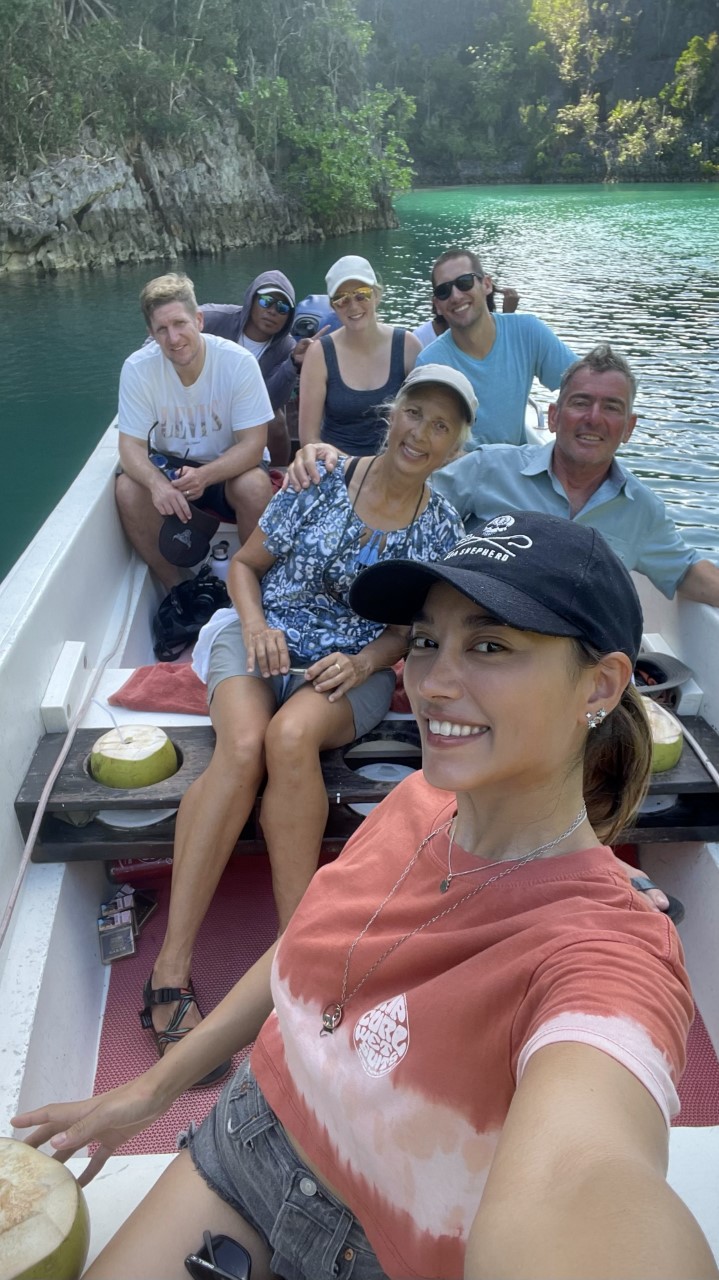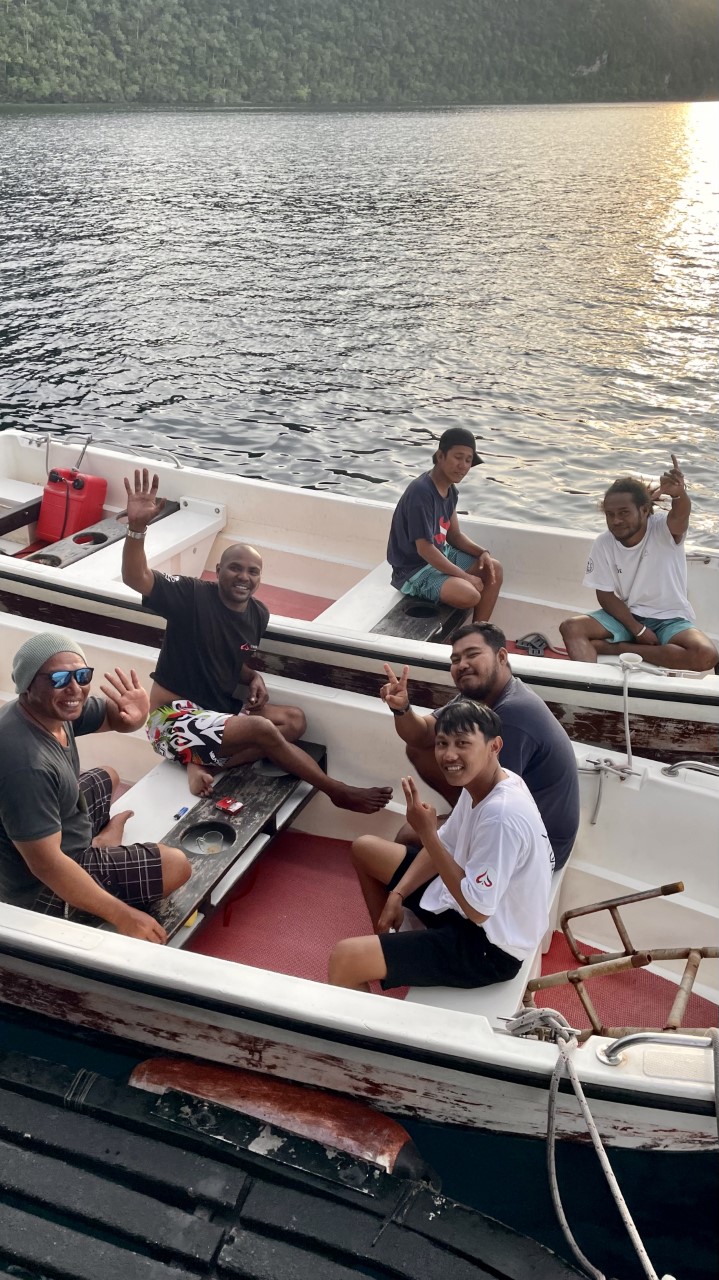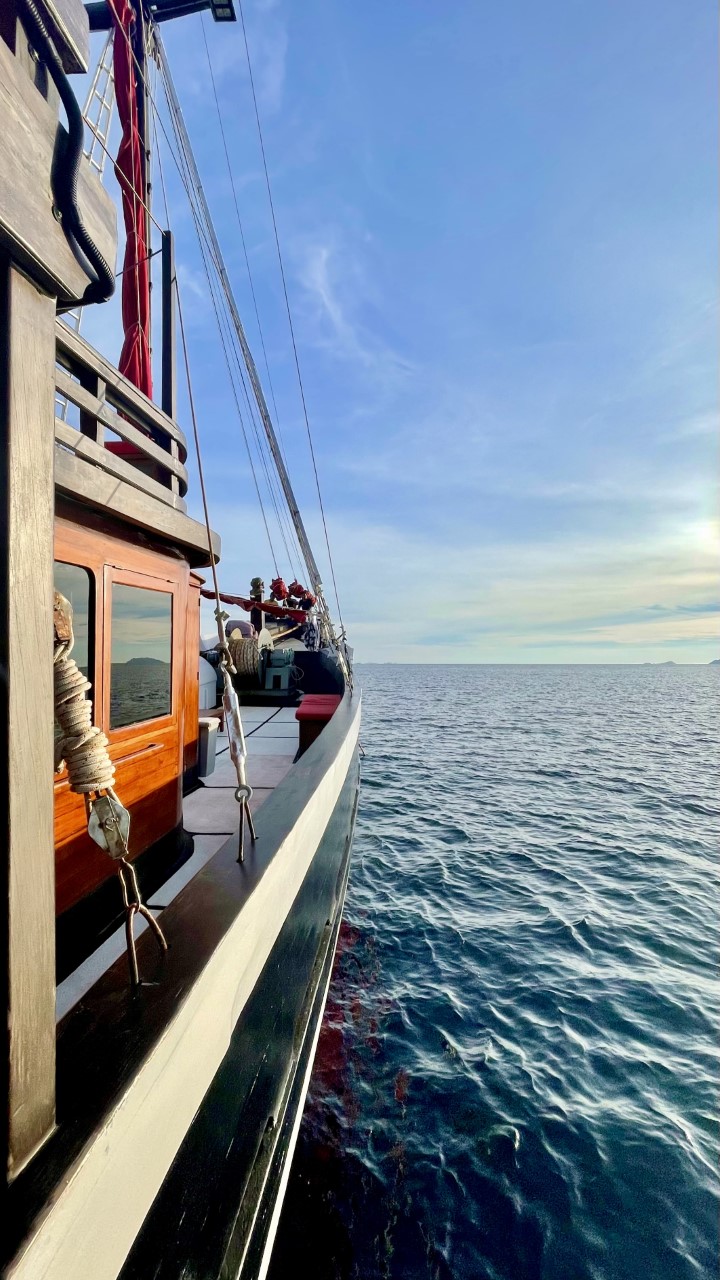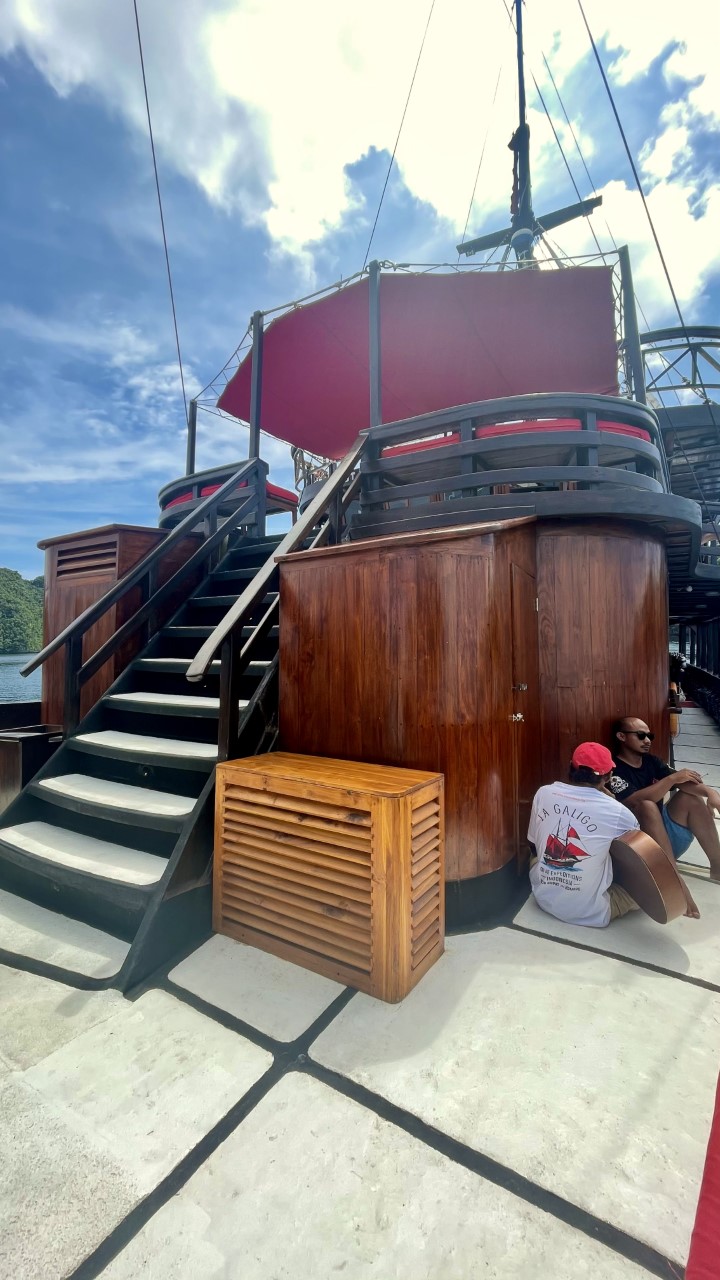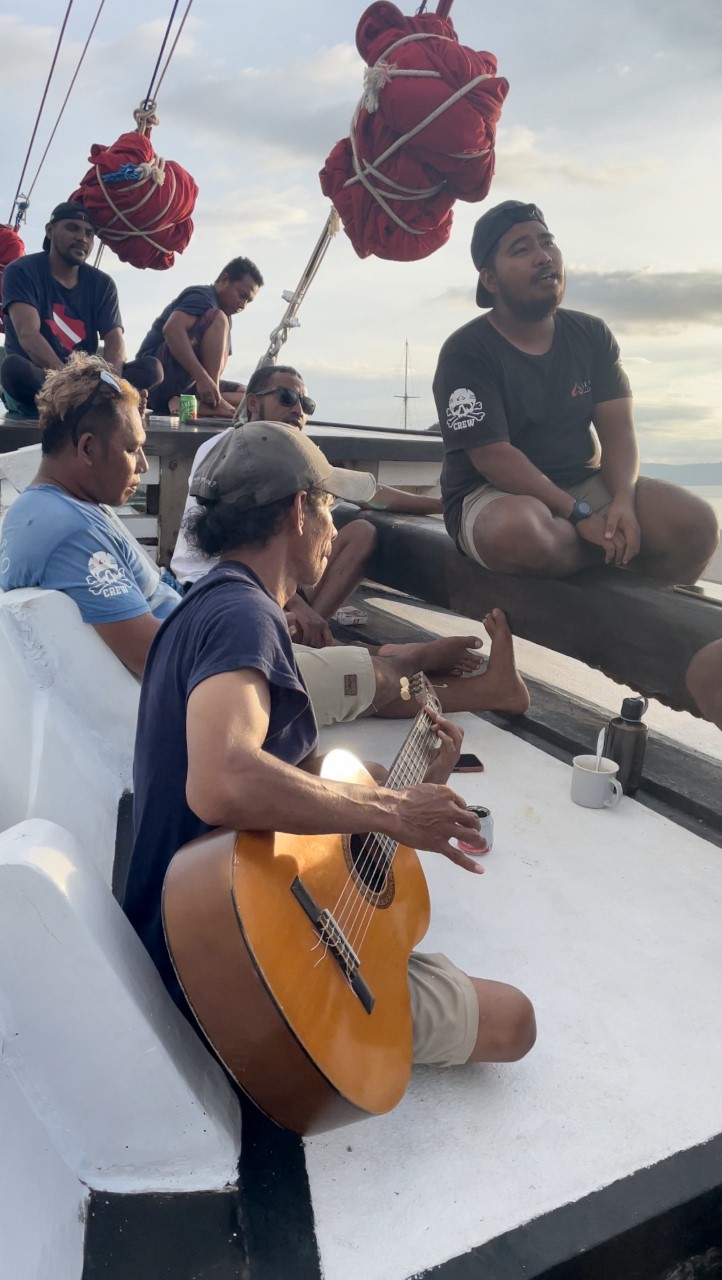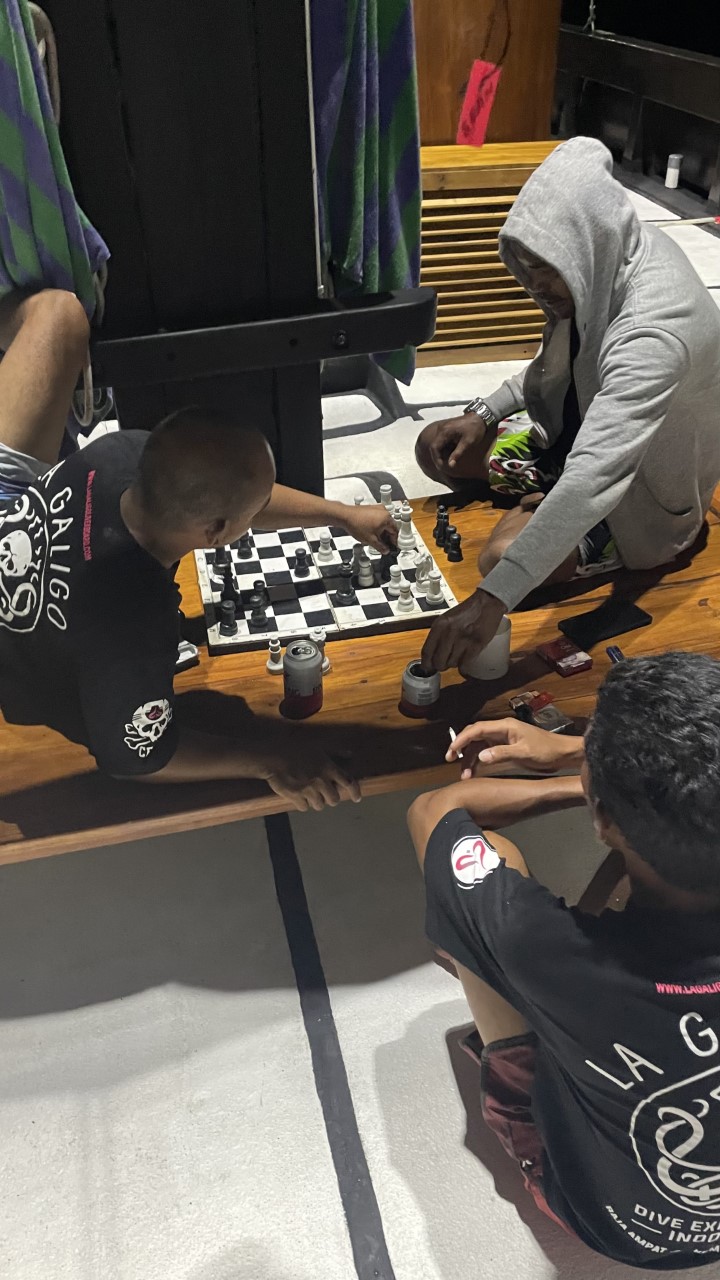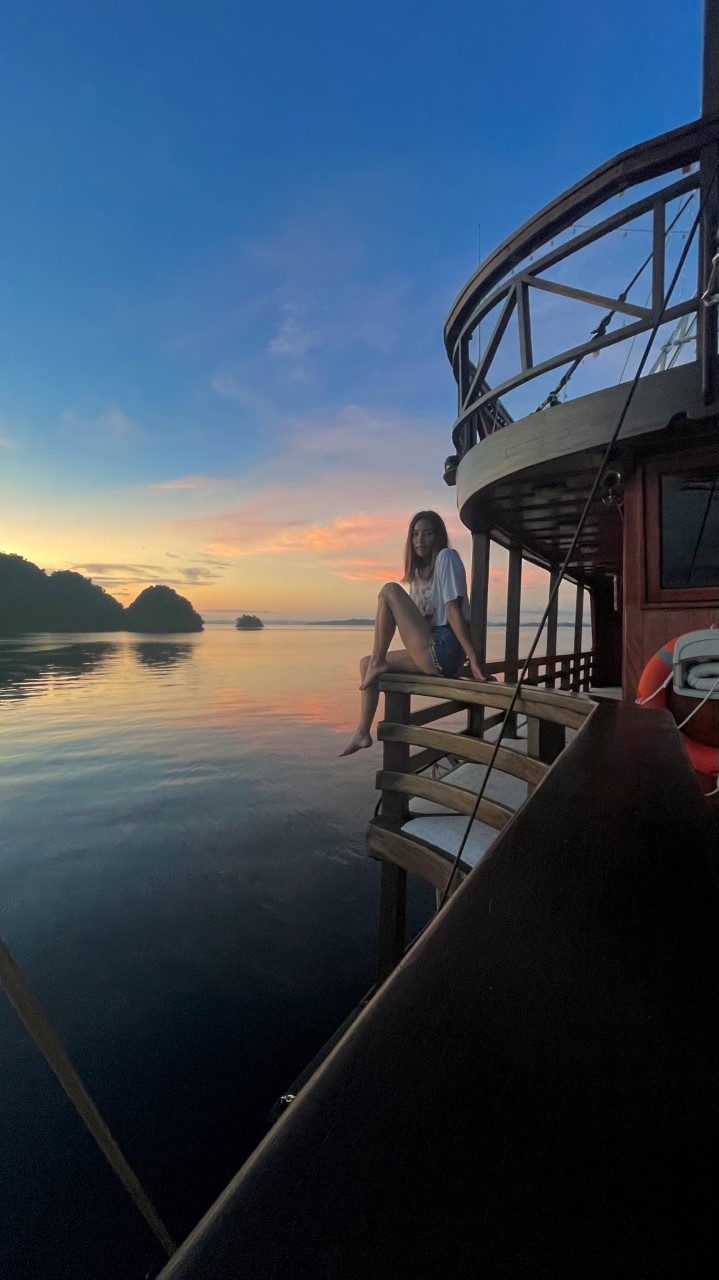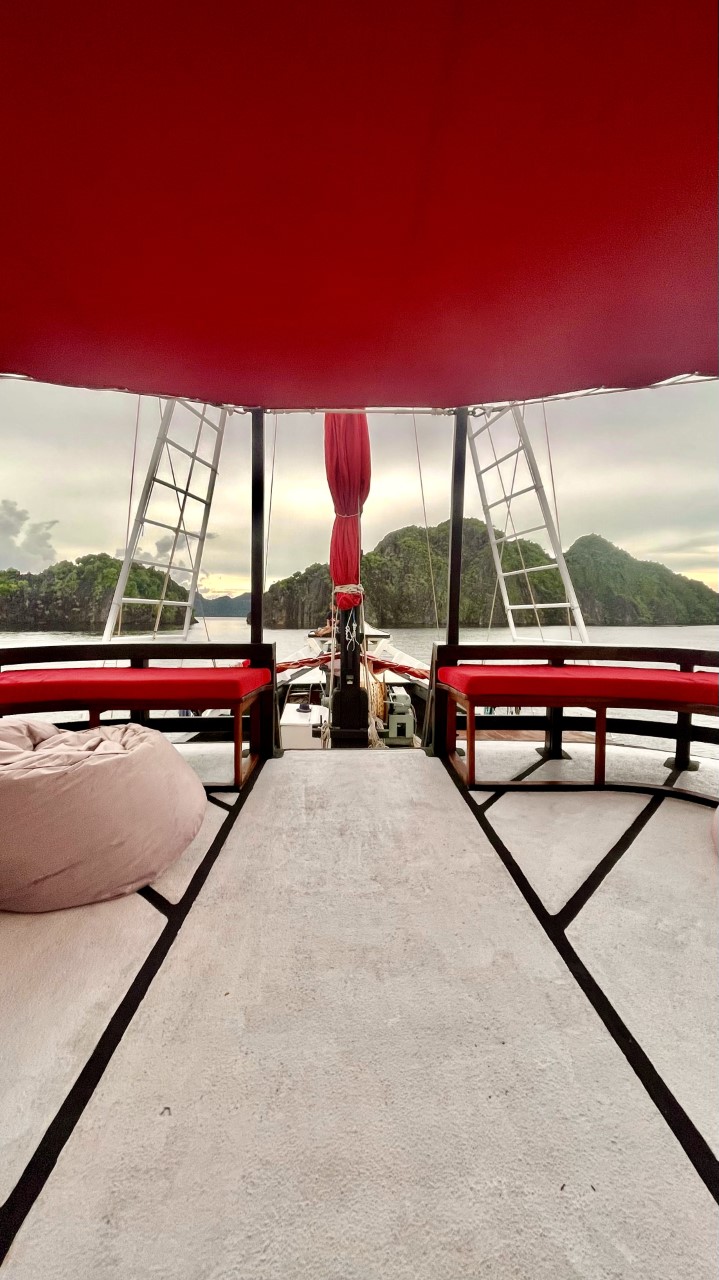
THE INTRO
After living and working in Indonesia for over five years, the stories I’ve heard about Raja Ampat have intrigued and surprised me. How is it that this most notorious underwater destination can be home to thousands of species of fish and corals, from the tiniest cephalopods to the giant oceanic manta rays, and yet still not be saturated with divers and littered with trash? It seemed the islands of Raja Ampat and the alluring blue that joins them all together had many secrets to be discovered, and I couldn’t wait much longer to explore what was below the surface.

THE BOAT
A liveaboard trip was the only way I could truly experience as much of the region as possible, and La Galigo offers an (aptly named) itinerary called, ‘Ultimate Raja Ampat’. It runs for 11 nights and journeys from Waisai up around to the northern islands then right down to the south, spending a few days in Misool and stopping at every dive-worthy site along the way, before heading back up to Sorong. I expected to be blown away by the diving, but the boat was impressive enough in itself. The vessel can sleep 14 guests and 17 crew, yet with its traditional Phinisi design and teak interior, it feels rich and spacious, even in the ‘smaller’ cabins. Considering the notoriety of even the most popular liveaboards, I was most impressed by the tiled and roomy bathrooms, the fresh, soft towels and the incredibly comfortable mattresses and soft cotton sheets.

THE JOURNEY
After collecting my hefty check-in bag – a bulky 24 kilos, even though I’d thought I had skimmed down my dive gear to (my standards of) the ‘bare minimum’ – I was greeted outside immediately by my dive guide, Aghi. He and the driver helped me lug my bag into the back of the car and we chatted on the way to the marina – an easy 20 minutes away. I learned he was from Manado and had worked in Raja Ampat for many years. When we were picked up by the tender and pulled in closer to La Galigo I couldn’t hide the huge, excited smile on my face by the sheer grandiosity of the boat and the shimmer of the sunshine on the water. I was welcomed on the stern by the crew and the cruise director, with waves and smiles they helped me onboard and took care of my luggage. I was finally here!
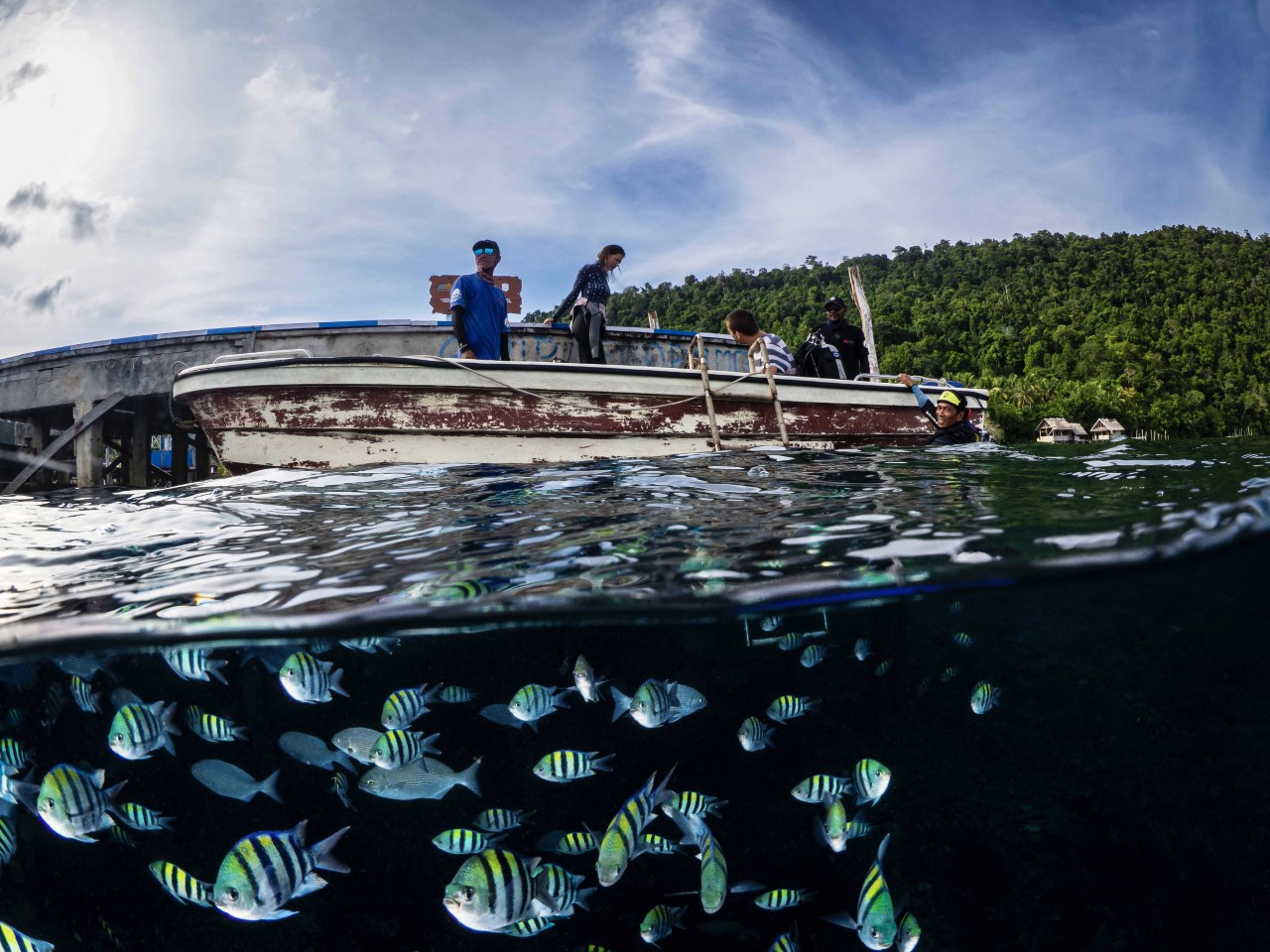
THE ARRIVAL
Fareez, the Singaporean cruise director, gave me the tour and explained the schedule as I stretched my legs and breathed in the warm sea air. We’d depart from Waisai after everyone had boarded and start diving that same afternoon. On a regular diving day we’d start at 07:00 with dive one, come back for breakfast, start dive 2 at 10:30, then have lunch, dive 3 would be at 14:30, followed by some snacks and maybe a rest, and dive 4 was around 17:45. The day rounded up with dinner served at 19:30 and, for most, a bit of after-dinner chat and an early night. Each dive site would be introduced with a thorough briefing by our experienced guides. I was excited, but nervous. I hadn’t dived this much in one day in years, let alone for 11 days in a row, so I was pleased to learn that we’d also be doing a few land excursions. A chance to see the infamous islands of Raja Ampat from a bird’s eye view – my head filled with images of cone-shaped green islands surrounded by aquamarine channels, sunlight glinting off the water’s surface as the salty breeze soothed my sweaty forehead. Let’s not skip ahead, though, there was a whole other world to submerge myself in first.
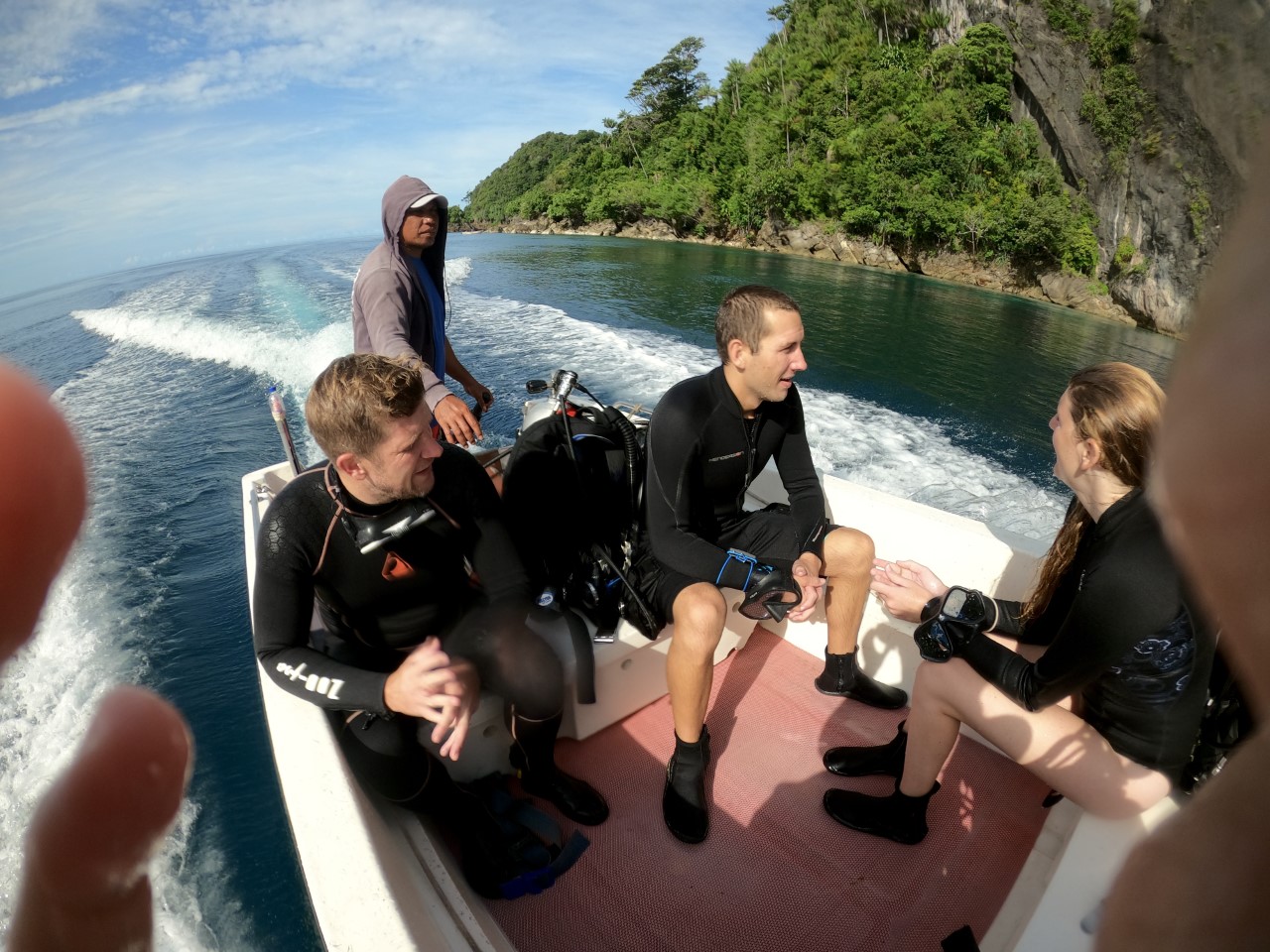
THE OPERATION
The two tenders delivered us in small groups from the dive deck to the dive site, and the crew run a smooth operation, ensuring your gear is set up and waiting for you, with a hand always in sight to help you step down or pass you your camera after you back-roll in. I, of course, had to be difficult. I was the only diver – bar the guides – who insisted to set-up my own gear and carry it on to the tender myself, and of course rinse my own wetsuit afterwards. After so many years of working in the industry and diving tech, it had been part of my routine, and since I was using my own equipment, I wouldn’t expect any less from myself. At first, I knew I had thrown off the crew, mainly because they were trained to do this as part of their job, but after the first couple of dives they’d gotten used to me hanging around for the extra few minutes that it took, and they would always smile and offer to hand me the allen key or hang up my dripping wetsuit. I loved watching them work seamlessly together whilst laughing and joking; they made it look effortless and enjoyable, and they welcomed us in with by switching to English when they could and including us in the banter.
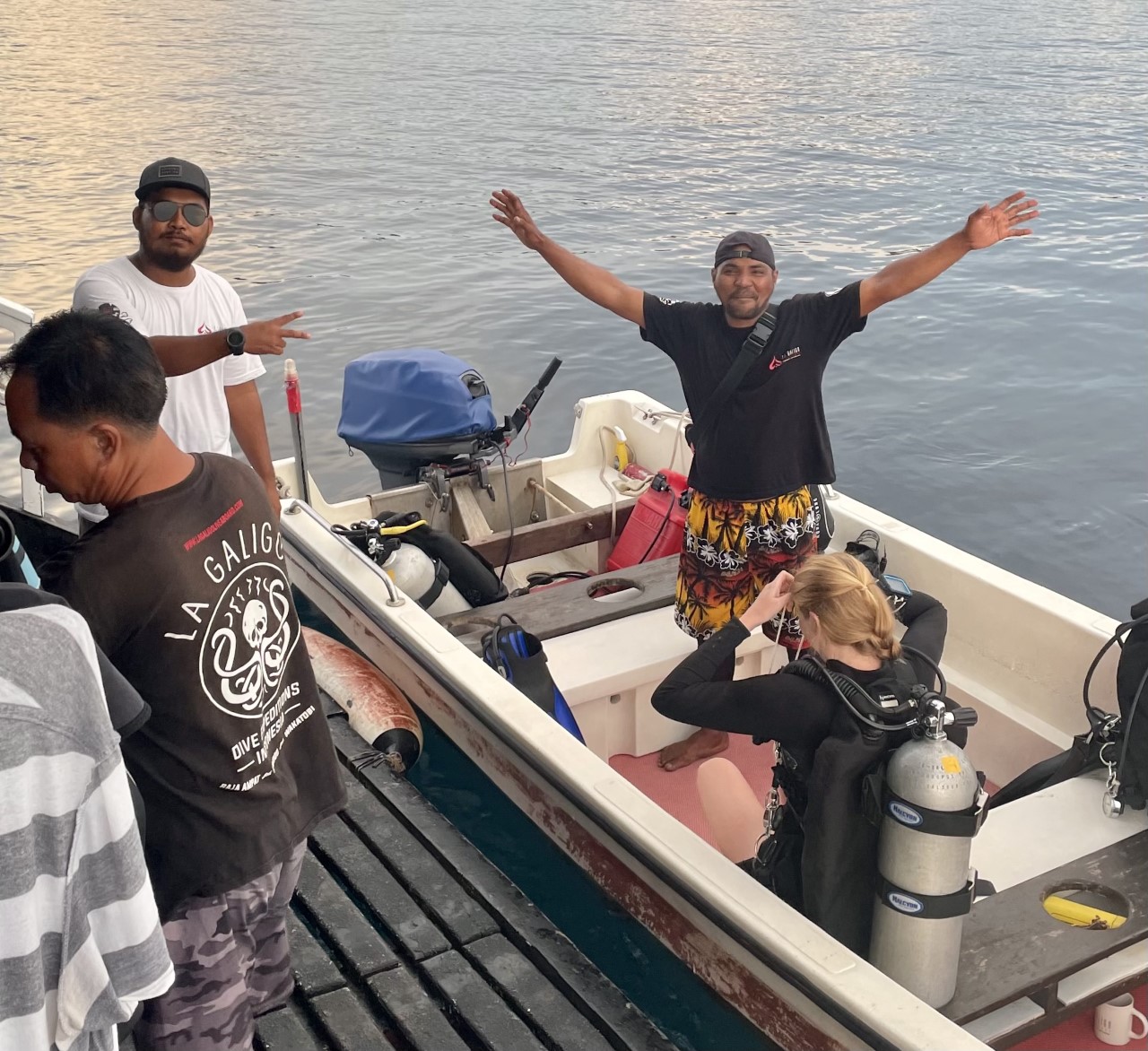
THE CREW
I’d been working in Indonesia for years by this point, so I thought I knew what to expect – a crew who not only knew what they were doing, knew the sites and the sea well, and of course did everything with a smile. I was not let down. In fact, the crew of La Galigo were always ahead of everything. They were up early cleaning quietly, taking care of their responsibilities without requiring a hovering micro-manager. And when they did have a chance to relax they either rested in their cabins or they revelled over a chessboard with their crew mates, laughing as they played their next move. Win or lose, they played again with a laid-back camaraderie that we could all take an example of (the ‘loser’ only had to set the board for the next game – not a high price to pay for the well-earned downtime with friends).
It’s not uncommon for us to favour certain dive operators over others for their staff, but honestly, I wasn’t anticipating just how easy and comfortable it would be to feel at home with the La Galigo crew. It’s easy to forget sometimes that if it weren’t for all these people working hard behind the scenes, we wouldn’t be able to enjoy the privilege of diving at all. The fact that these guys did it all flawlessly and still managed to make it look like fun was yet another reason for my admiration of them.
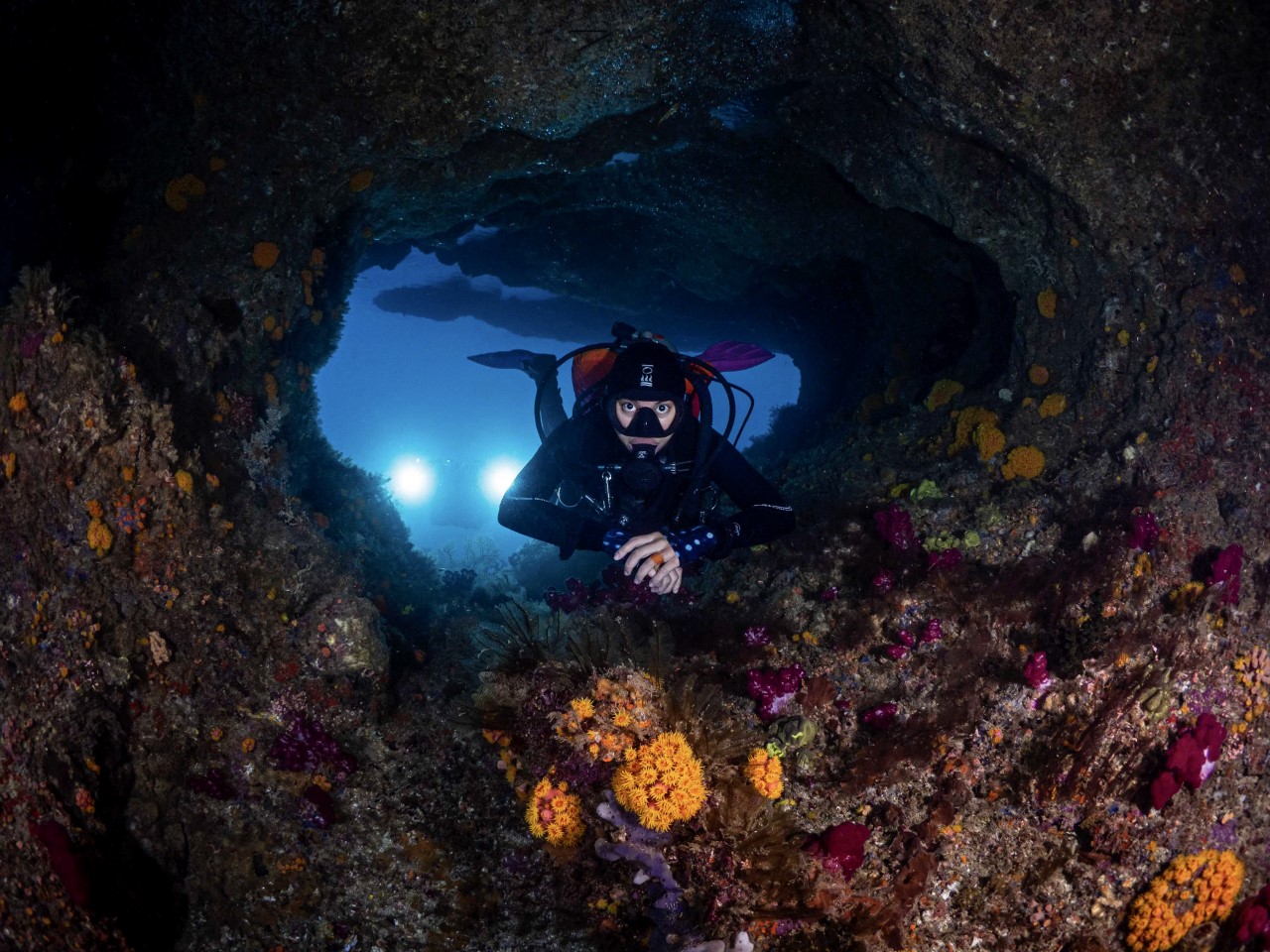
THE DIVING
Now, to the bit that you might think was the sweet, buttery icing on top the multi-layered cake, but I found was more like the warm, fruity filling that I only discovered after it was already melting in my mouth. Raja Ampat’s legacy of being “the last paradise” did not disappoint. The Earth’s true Garden of Eden would have been an equally appropriate epithet. Boy, does this region have an incredible amount of soft corals, in every colour that you didn’t know existed. Of course, you might already know that it’s infamous for its biodiversity, but Raja Ampat just has its own magic potion in the water – I felt like I’d back-rolled into an episode of Attenborough’s Blue Planet. It’s the cliché again of saying it was like diving in an aquarium, except this was like diving in an aquarium in a Disney movie.
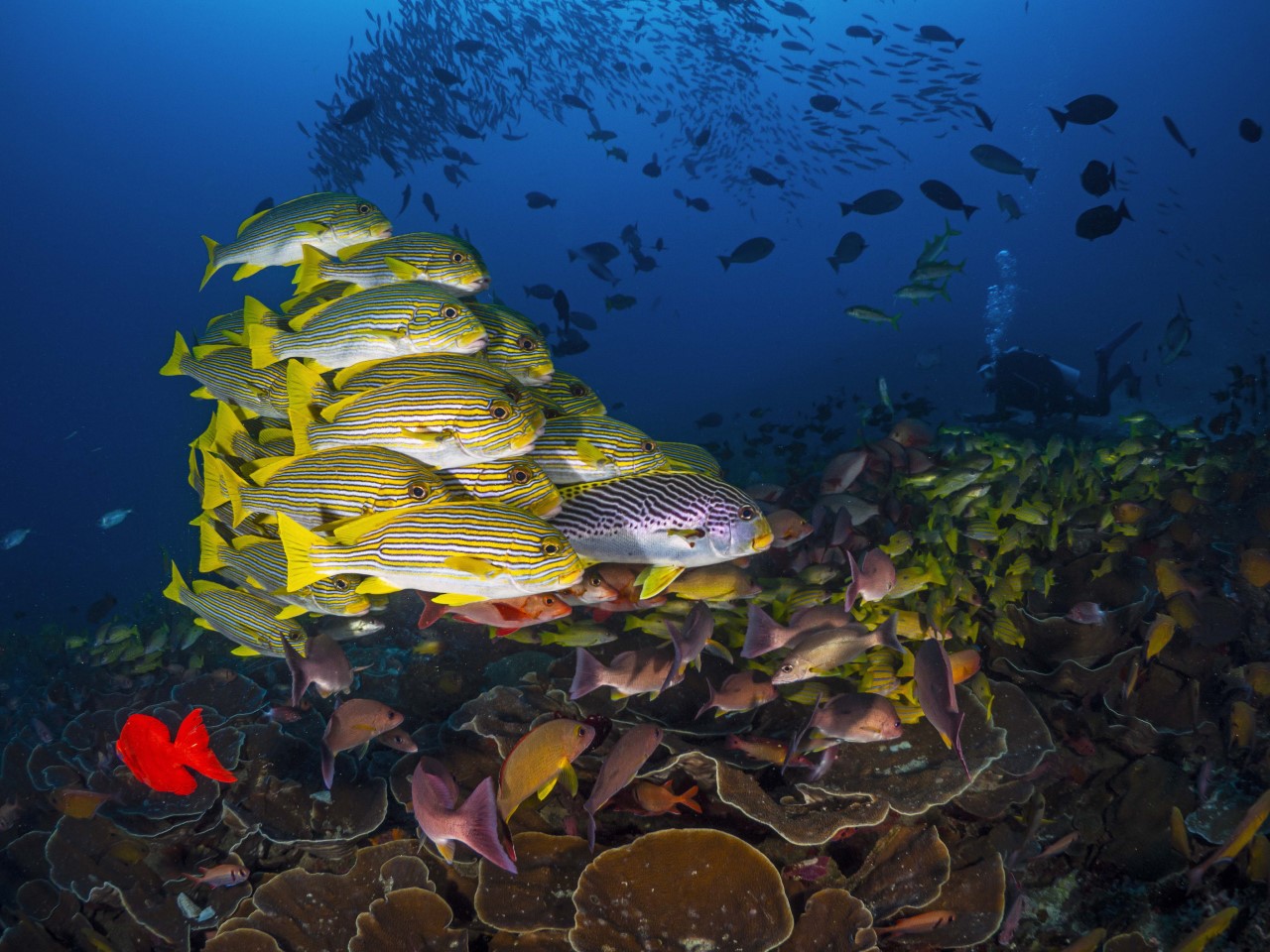
THE LIFE
Okay, so the birds didn’t help me zip up my wetsuit and the pufferfish didn’t draw me hearts in the sand, but in a way, it was almost better than that – I became a witness to their lives. They weren’t afraid of me. They just let me hover there, watching them dance around the table corals, the candy-coloured anthias darting in and out of the staghorn in perfect synchronicity. The glittering anchovies swirling in waves around me, while the trevallies and jacks swooped in like bullets on loops. I watched as thousands of soft jellies filled the watery blue, pulsing to their own rhythm. Deep pinks and dusky purples, acid greens and egg-yolk yellows, the full kaleidoscope of colours live on these shallow Indo-Pacific reefs, all with their own individual existences, but living together in a perfect beating, breathing painting. In these moments I realise we are not the artists, or even the spectators – we are the custodians. I feel so grateful to be breathing and able to interact with this world, and only wish I knew how better to protect it.

THE WATER
The powerful ocean currents were really the only way I knew I was awake. On most sites the currents ran in one direction, easy to navigate, since I was a seasoned salt-water diver and our guide Aghi kept a comforting eye on us. The group I was diving with were also pretty experienced and comfortable in the water, so I only had to focus on keeping my depth and position close to the reef. My main concern was overexertion and increased SAC rate due to heavy breathing, which even happens to divers with tiny lungs, like me. Thankfully, most dives were gentle to moderate drifts, my favourite kind on coral reefs (I’m a self-proclaimed lazy diver, as anyone who has dived with me will know). There were a couple of dives that had me thrown, though – predictably, the sites with Mantas.

THE MANTAS
We fought the strong pull towards the blue for the first minute to get down to the shelter of the sea mount and hooked on to the reef for the most spectacular view of these gentle giants. Still, a few minutes into the dive it was clear I was in the least advantageous position. I turned behind me to look at the rest of the dive group and their gaze was glued above us – to where the manta rays were flying in to be cleaned by swathes of butterfly fish – “so, it’s just me”, I thought with relief, as the water swirled around me, pushing me up, dragging me side to side and pulling me down. I inched closer to the reef, holding on to the hook, ravaging my bare hands on the stinging hydroids to avoid having to unhook and swim away from the washing machine current that was throwing me around like a rag doll. I revelled in the rest of the manta show trying not to think about my burning hands and how stupid I was not to pay enough attention to where I was putting them. Lesson learned! (But hey, the mantas were still worth it!)
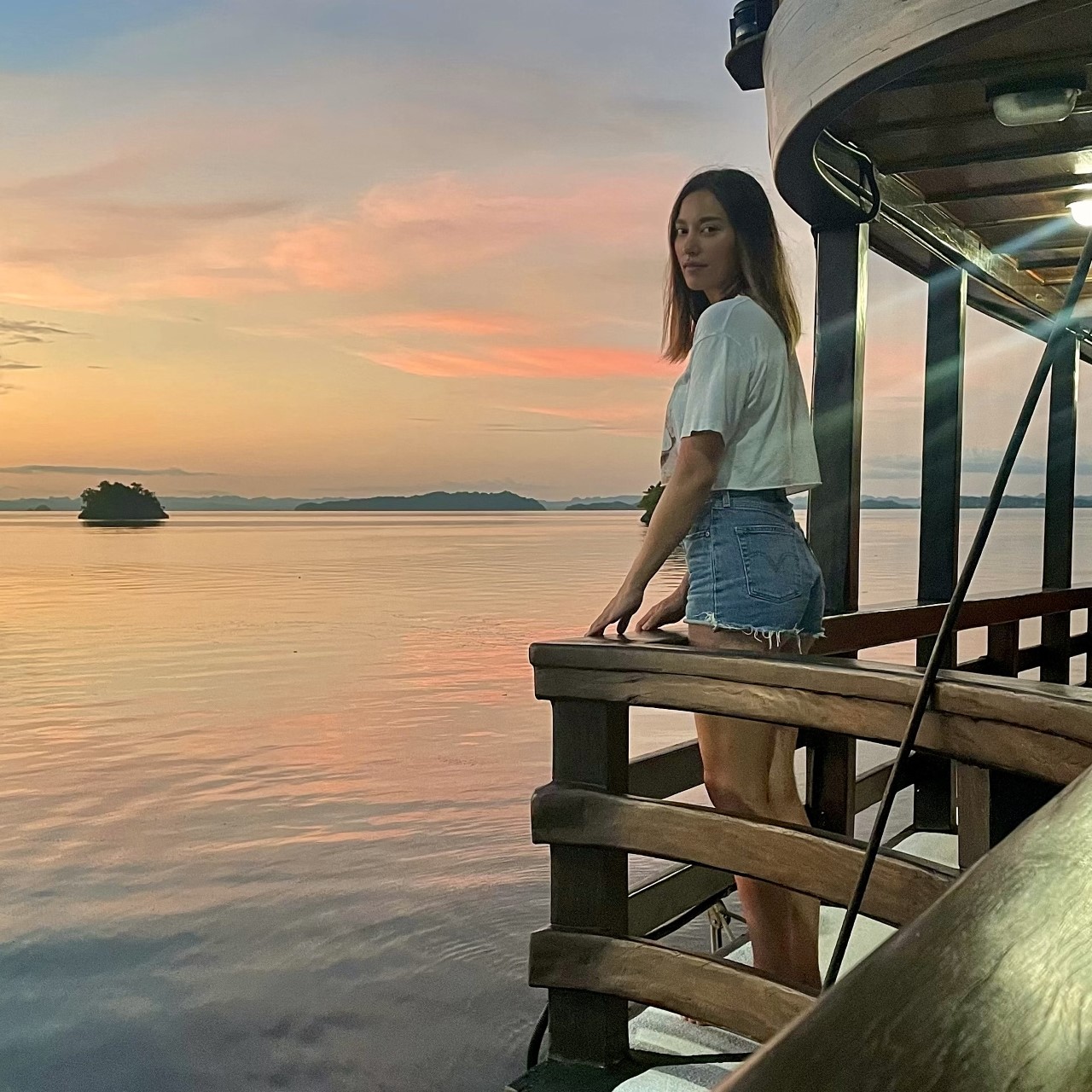
THE SURFACE INTERVALS
Immediately after every dive most people would pull out the fish ID books and swipe through their GoPro footage – not me. I knew I had a four-day journey ahead of me after this trip, so, when I wasn’t eating or writing, I spent most of my dry time exploring the boat, breathing in the warm, salt air and chatting with whomever would listen to me natter on. And I only regretted this a little… Okay, so several days in I realised I should have been backing up my data because I had a little mishap with my GoPro SD card. I also did find eventually myself peering over shoulders to watch videos taken by some of the other divers – still in awe of what we had seen that day – and digging into the ID books – trying to explain what kind of fish I had seen scooping up shells and placing them outside of its den, which shrimp I had seen crawl of the wide open mouth of the huge moray eel resting in a crevice of the corals, or what predator had flown past me like a missile to hunt for her afternoon snack.
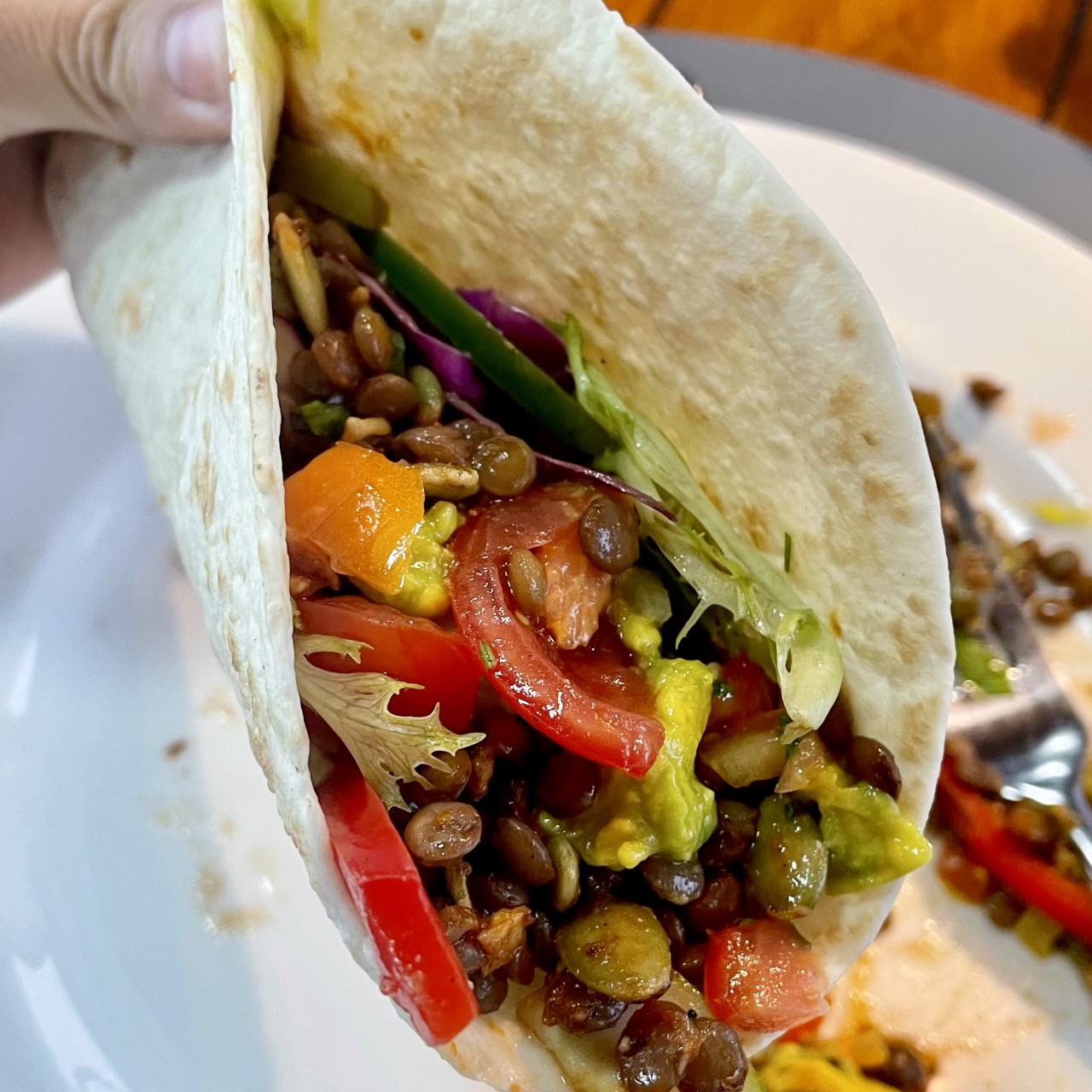
THE FOOD
My plates were a lot more civilised – as a vegan it’s always a gamble hoping to maintain a balanced diet while travelling. La Galigo’s chefs catered to my diet without hesitation, serving me up baked tempeh in gravy on my first night, peanut satay tofu on another, warm, soft doughnuts and cake as afternoon snacks, and – my personal kryptonite – lots of fresh, sweet local fruits. It was all too much food for me initially, but after the diving started I suddenly had a bottomless appetite and so I filled my belly with gusto. I simply can’t write this section without special mention to the chef for the lentil and pumpkin seed burritos with fresh salsa and guacamole, and of course the fresh salads and sautéed vegetables. It’s hard enough to eat healthily on diving trips, let alone on an 11-day liveaboard. I managed to indulge and also keep my body happy and feeling light and energetic, which was a recipe I will be trying to recreate at home. In between meals there was also an open spread with the most delicious, hot filtered coffee, teas, nuts, biscuits, cereal and potato chips.
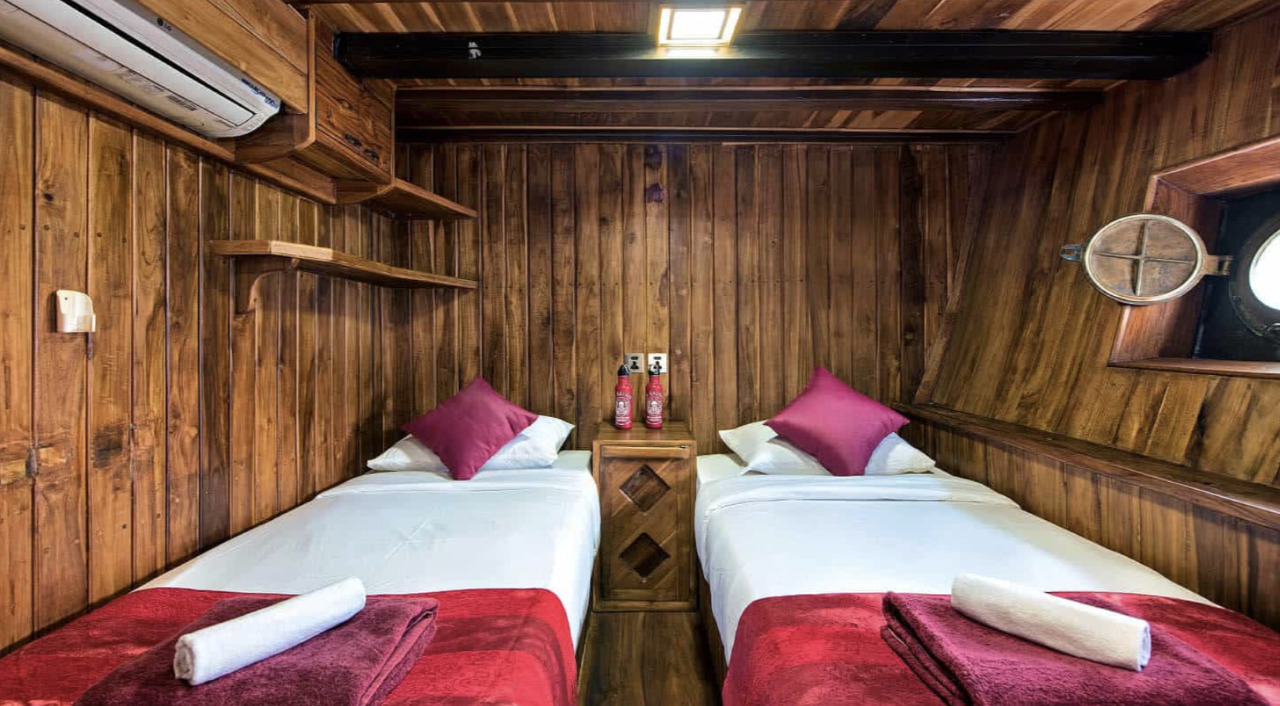
THE SLEEP
After all that food, and next to diving, what is our favourite activity on a dive trip? Ah, yes, the elusive three z’s, or four if you are unlike me and lucky enough to have mastered the art of napping. My sleeping patterns had been pretty erratic in the months leading up to this liveaboard trip, but I knew as soon as I stepped onboard it wouldn’t be difficult to relax. In fact, the bed in my cabin was even more comfortable than mine at home, so comfortable that I wouldn’t allow myself to lie down there during the day – in fear of an attempted nap turning into an eight-hour deep sleep (which may also be in part to my brain not understanding what a 15-minute snooze is). But if it weren’t for the breath-taking reefs and idyllic views, I likely would have spent the mornings melting into my mattress without a care in the world. Instead, I would hear my alarm at 06:00 and immediately leap out of bed for a little light yoga (yes, my ‘small’ cabin was even spacious enough for this!) before heading outside to feel the warmth of the morning sun on my face.
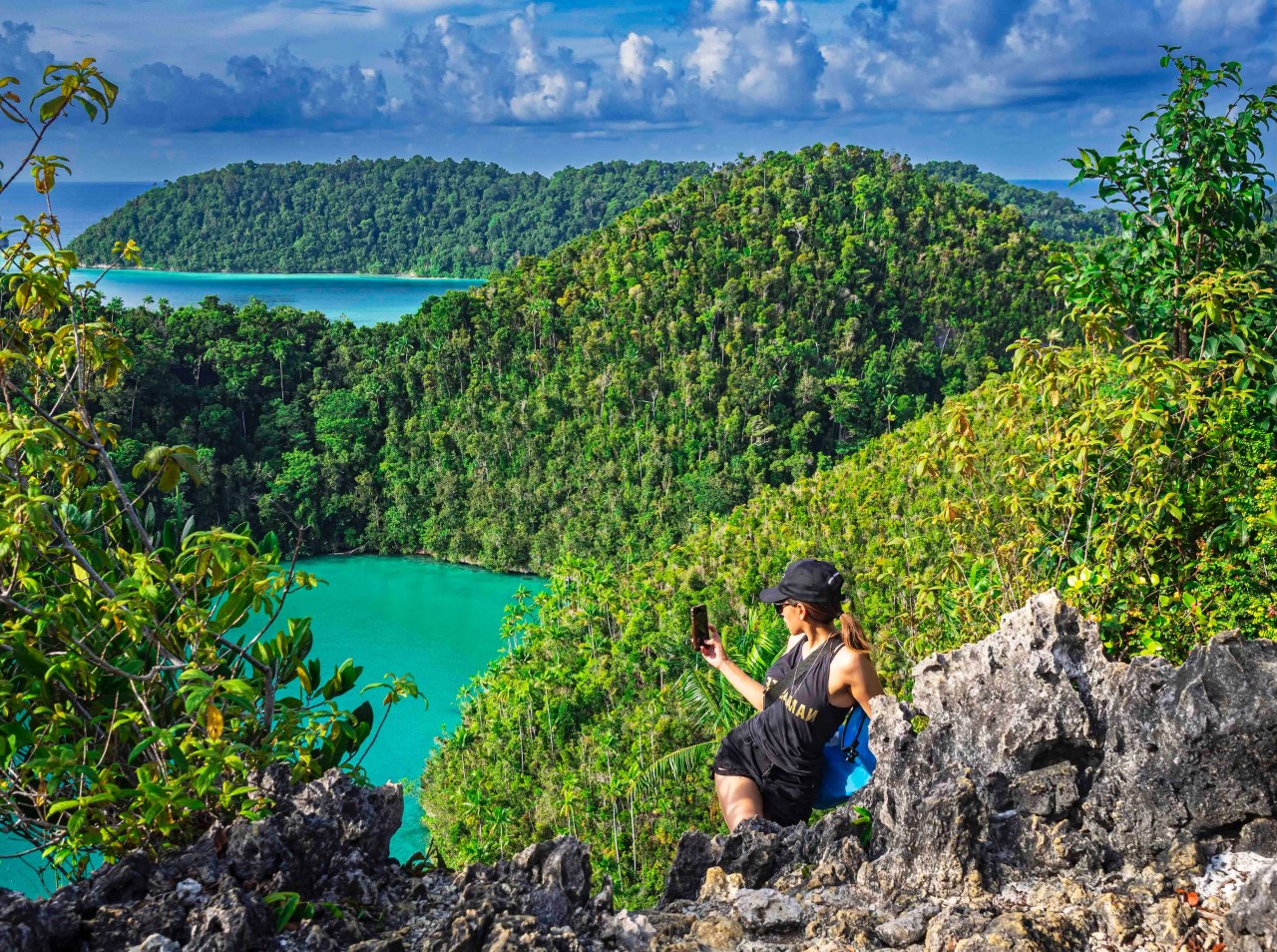
THE HIKE
There were a few days on this eleven-night trip where we replaced either an early morning dive or a night dive with an above-surface excursion. The most memorable was certainly the climb up a limestone island that even I, as a reasonably fit and young person, was in doubt of my ability to lift myself up the jagged rocks. It didn’t help my confidence that despite there being others much older than me, I was still the last one to reach the top and it seemed that everyone else got there with ease. It may also have not helped that I still have a fear of heights, something that I’m working on, although it’s gotten better over the years. And, wow, was it worth supressing for those panoramic views. It was the picture of Raja Ampat that you have in your mind- the lush green islands bathing in this surreal turquoise lagoon, almost too beautiful to be real. Only a slight breeze was rustling through the palm leaves, a sweet relief for my sweat-drenched self, but not enough to stop me from jumping into the water after climbing back down. And after a refreshing swim, we headed back to the boat for breakfast, buzzing with accomplishment and anticipation for the next adventure.
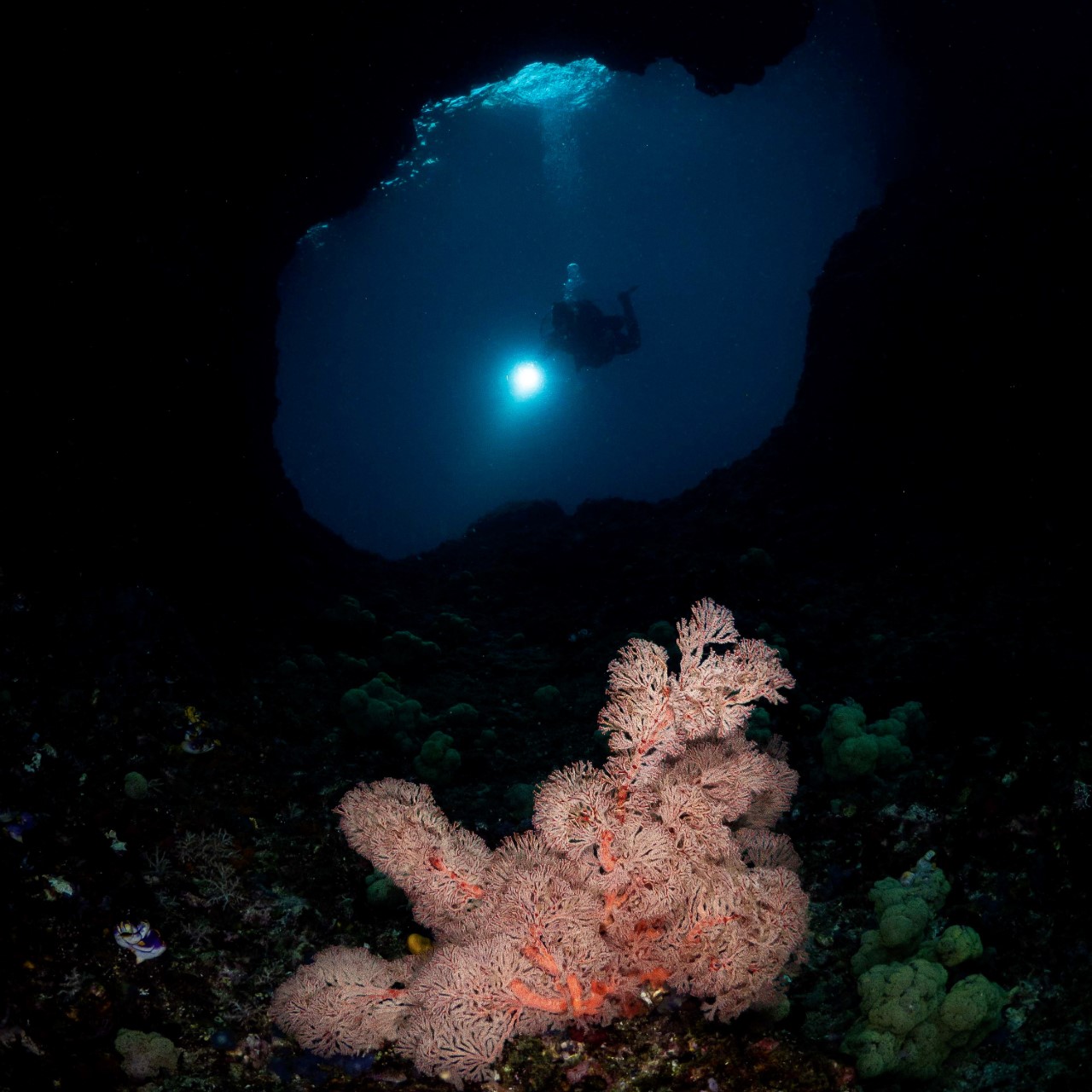
THE NIGHT DIVES
From my experience in the industry I know that night dives are not for everyone. I’m one of those divers who actually loves night diving, but can usually never be bothered to pull on wet neoprene in the cool evening air, so you’re far more likely to find me watching the sunset with a Bintang and a guitar (something I did manage to do a couple of times on this trip). However, it’s hard to say no to arguably some of the best night diving in the world – and these dives did not let me down.
Aside from seeing animals I’d never seen before (and as a reference – I’ve done many night dives in the infamous Lembeh Strait), like the walking shark, the wobbegong, and so many flamboyant cuttlefish I thought I may be imagining them, there was also an edge to these dives that I hadn’t felt elsewhere. They were satisfyingly exciting – normally I would be maxed out at 30 minutes, shivering and counting down the seconds to a warm shower – but I found myself totally enchanted; every setting sun was like Christmas eve, the child in me full of wonder at what magic might happen on this starry moonlit night. I was overjoyed to play with bioluminescent plankton, sparkling with every swoosh of a hand, and fascinated to watch as the larval wunderpus octopus would bury itself with sand and broken pieces of shell, disappearing as soon as it appeared. I never wanted it to end, ascending at a nudibranch’s pace so that I could enjoy ‘just one more minute’.
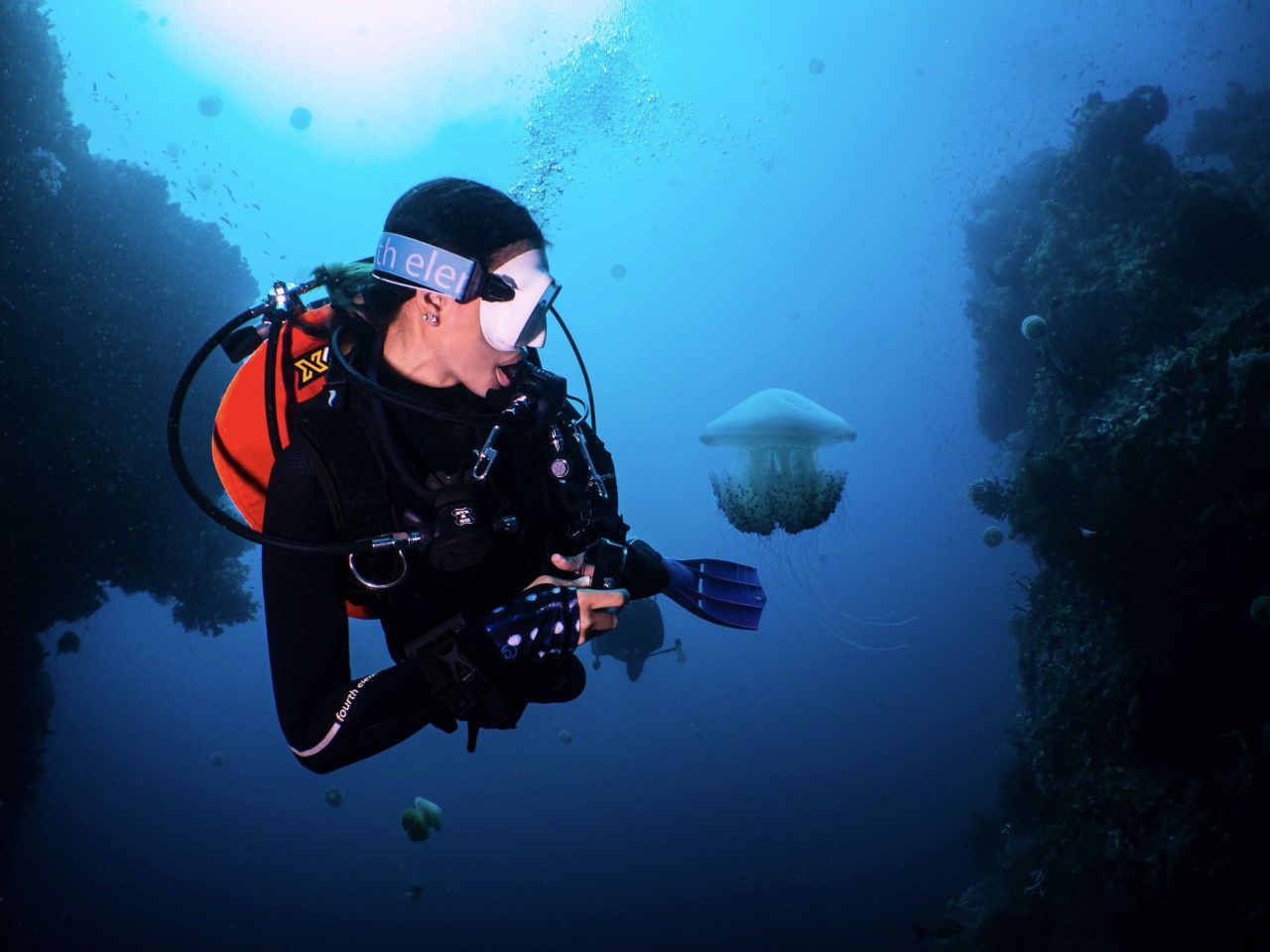
THE END?
If you couldn’t already tell, my time on this liveaboard was an exhilarating experience for me. It had been years since I’d been diving for reasons other than work and I’d never been pampered so much on a dive trip, ever. But it’s still not what I had expected. As a dive professional, I’ve been so used to being responsible for all the logistics, briefings, safety and more, that I think I’d neglected the simple joy of scuba diving just for the fun of it. La Galigo and the crew – especially my guide, Aghi – but also my fellow divers, really brought back that spark and made this trip really special. It felt sad to say goodbye to my new friends, and, between you and me, the only reason I stepped off that boat voluntarily was the comforting knowledge that I would be back again, hopefully next year. So if you’d like to come with me, get in touch to plan our adventure.
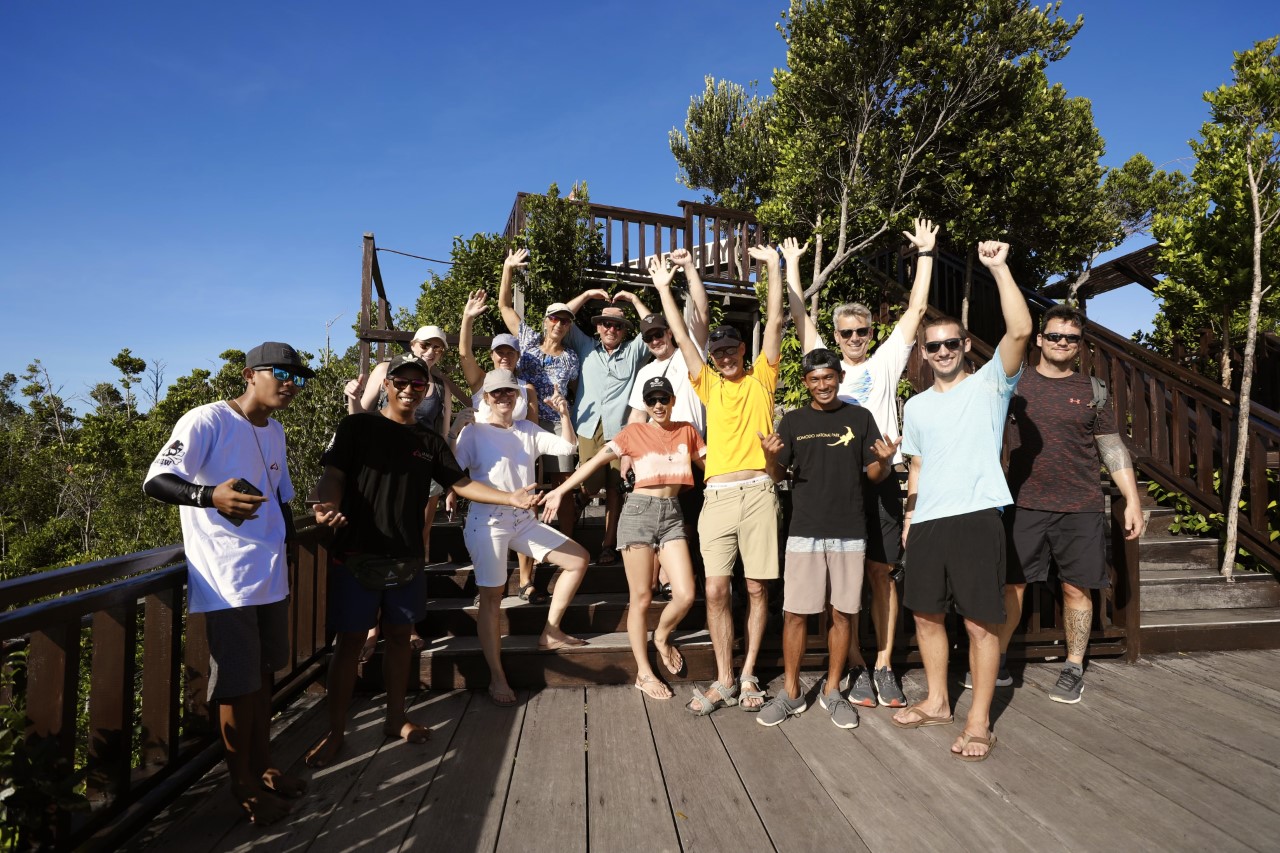
TO BE CONTINUED…
on Raja Ampat and Komodo trips with La Galigo
